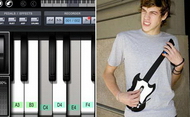New media, old messages

An ongoing exhibition at the National Art Museum, Translife, features 53 new media artworks by artists and artist groups from 23 countries and regions. Visitors can not only view the works but also interact with them at the first International Triennial of New Media Art.
"Although these works depend on digital and media technologies, they are not the usual, fancy exhibits of a pop science show. Instead, they raise questions about pressing issues facing mankind such as the ecological crisis, man's alienation and new forms of life," curator Zhang Ga says.
Zhang initiated the nation's first large-scale new media art show, Synthetic Times, a critically acclaimed 2008 Beijing Olympics Cultural Project, in collaboration with National Art Museum of China director Fan Di'an.
The triennial is a philosophically charged exhibition, Fan says.
"By engaging audiences with diverse artistic positions and strategies, the exhibition raises questions about modernity and anthropocentrism, and advocates citizen participation in confronting the current ecological and environmental crisis," he says.
The exhibition is organized in three thematically related parts. The first part is called Sensorium of the Extraordinary. Zhang says it aims to "bring awareness to otherwise imperceptible human capacities".
For instance, Dutch artist Marnix de Nijs' 15 Minutes of Biometric Fame, is an interactive installation that has a crane moving autonomously and randomly over a large circular track to point a camera at visitors in the exhibition hall.
The installation scans each visitor's facial features using biometric video analysis software and compares them to those stored in a database which features online celebrities found through searches in the world's major languages.
This is then projected on an LCD monitor. Those faces that match the ones in the database are displayed on a large public screen and added to the database - giving ordinary visitors a fleeting experience of celebrity status.
At another exhibition hall, Belgian artist Lawrence Malstaf's Nemo Observatorium gives visitors a chance to sense what being in the eye of a storm feels like, and challenges them to stay calm in a fast-changing environment. Styrofoam particles are blown around in a huge, transparent PVC cylinder by five strong fans as visitors sit on an armchair in the middle of the whirlpool.
In the chair - the eye of the "storm" - it is actually calm.
The second part of the exhibition, Sublime of the Liminal, takes artificial life, intelligent objects and transgenic hybrids as natural objects, exploring the liminal states of these emergent life forms, and their unique manifestations of vitality.
For instance, NoArk, from the Tissue Culture & Art Project, an art collective from Australia, is a display of lab-grown, lab-modified life forms, that questions ideas about a progressive complexity of species.
Meanwhile, Irish artist Ruairi Glynn's Performative Ecologies creates a kinetic "conversational" environment, "examining what it means both to observe and to be observed by machines".

